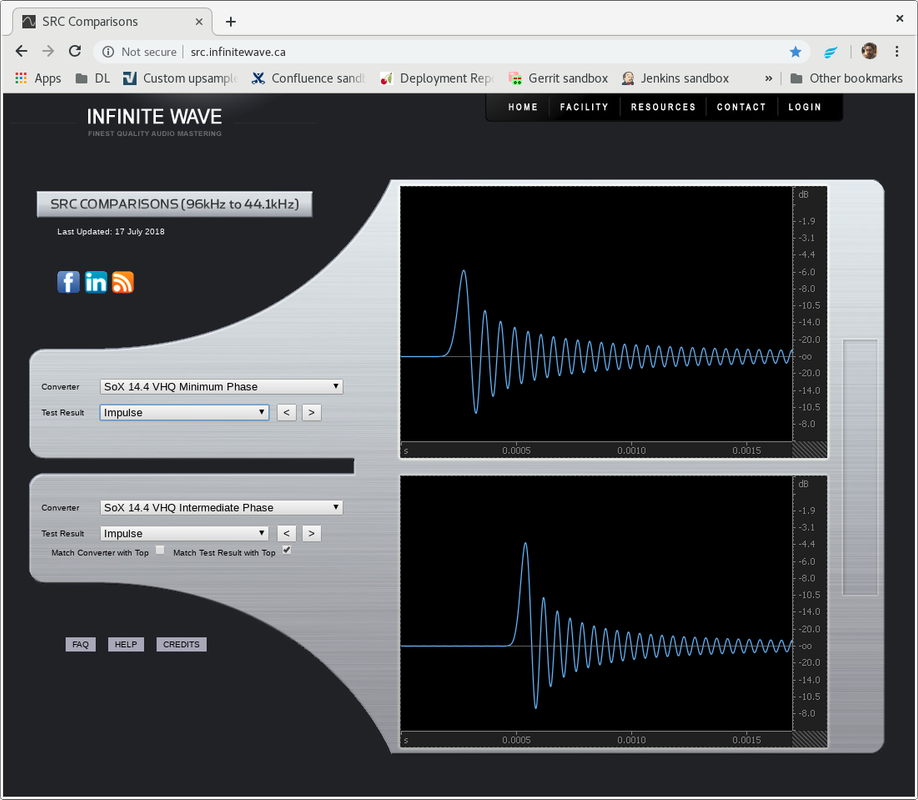darrenyeats
pfm Member
New thread jumping off from my OT tangent in the latter part of https://pinkfishmedia.net/forum/threads/noise-shaping.198251/. For those interested (both of you!) see posts there from me and Jim for background.
1. Notice how intermediate phase doesn't have any visible pre-ringing. With SoX it seems very sensible to use intermediate phase instead of minimum phase.
2. Some "minimum phase filters" provided in DACs and SRC apps may really be "minimum phase-type filters" i.e. intermediate phase (and indeed ISTR that phrase in a review) rather than technically minimum phase.
3. Both the below are with wide-bandwidth very steep filters near 22kHz. I like a flat-to-19kHz filter which is less steep, so the ringing would be somewhat less in both cases.

I've rigged up my hacked LMS SoX-side volume control to switch seamlessly between filters, and I'm homing in on the best tracks on which to do some blind testing of linear versus intermediate phase filter (I have only 1 or 2 possibles so far). The quick A/B has revealed the difference generally isn't night and day: I need a gross, quickly heard difference to have a chance with blind testing (I find it long and very unpleasant, and my brain shuts down quickly!)
I'm still happy with intermediate phase (-p 25) after many weeks. Below is the difference between minimum phase (-p 0) and intermediate phase (like -p 25) in SoX. My thoughts about it below.Now using intermediate phase (like "-p 25" in SoX)! That's means half way between minimum and linear phase in terms of phase distortion.
Before I was treating linear phase as good/home base. After more listening, I've now decided minimum phase is good/home base for me. Extrapolating from Archimago's blog, "99% of minimum phase goodness" for half the phase distortion.
Will report back long-term.
1. Notice how intermediate phase doesn't have any visible pre-ringing. With SoX it seems very sensible to use intermediate phase instead of minimum phase.
2. Some "minimum phase filters" provided in DACs and SRC apps may really be "minimum phase-type filters" i.e. intermediate phase (and indeed ISTR that phrase in a review) rather than technically minimum phase.
3. Both the below are with wide-bandwidth very steep filters near 22kHz. I like a flat-to-19kHz filter which is less steep, so the ringing would be somewhat less in both cases.

I've rigged up my hacked LMS SoX-side volume control to switch seamlessly between filters, and I'm homing in on the best tracks on which to do some blind testing of linear versus intermediate phase filter (I have only 1 or 2 possibles so far). The quick A/B has revealed the difference generally isn't night and day: I need a gross, quickly heard difference to have a chance with blind testing (I find it long and very unpleasant, and my brain shuts down quickly!)
Last edited:

